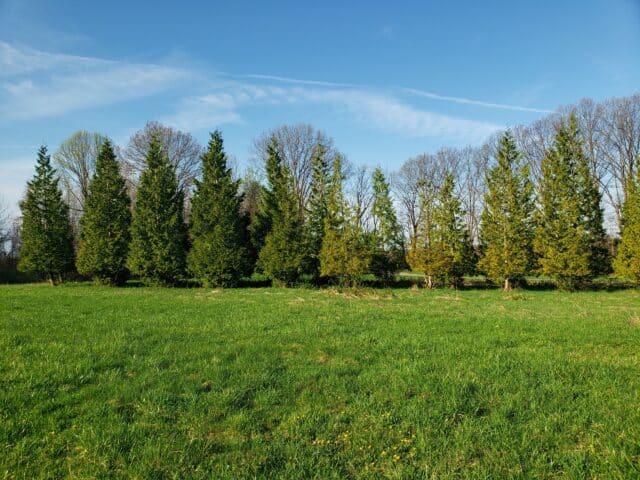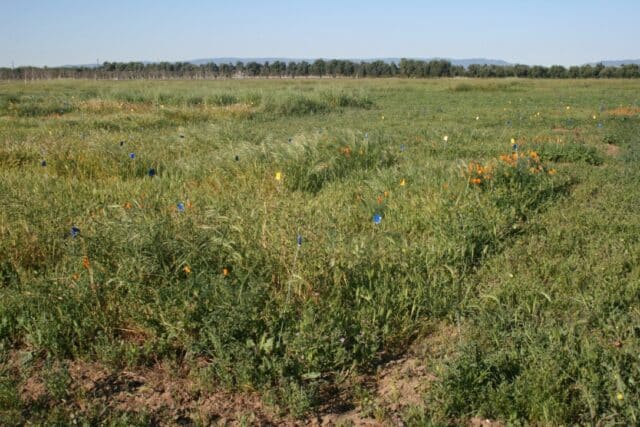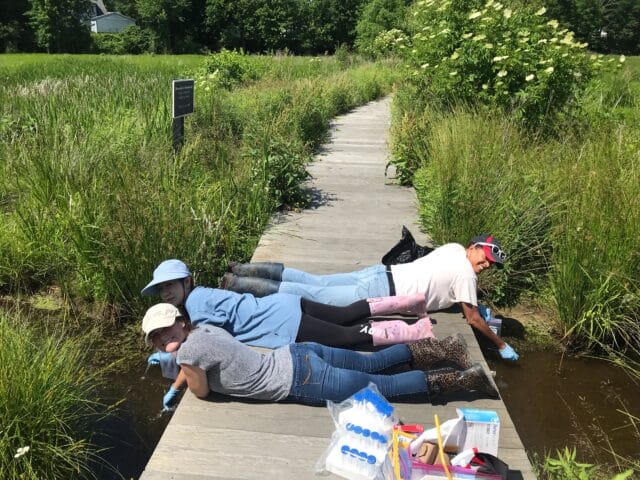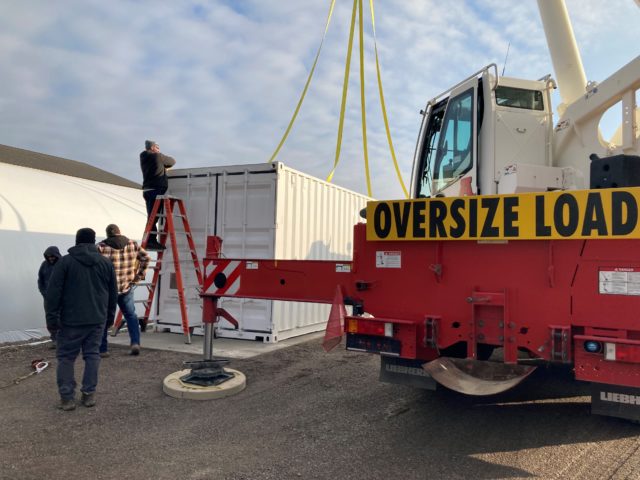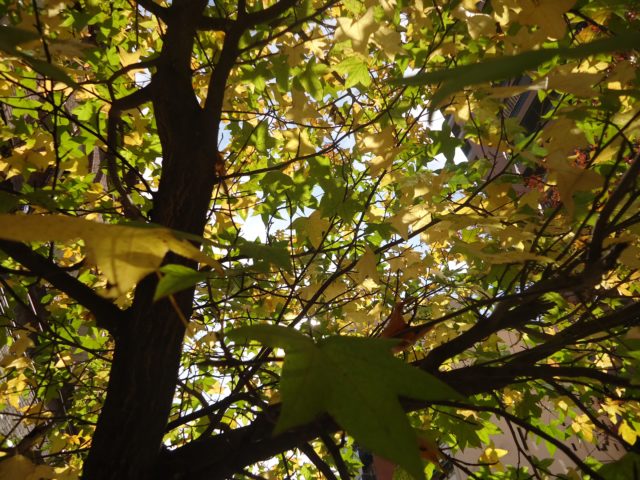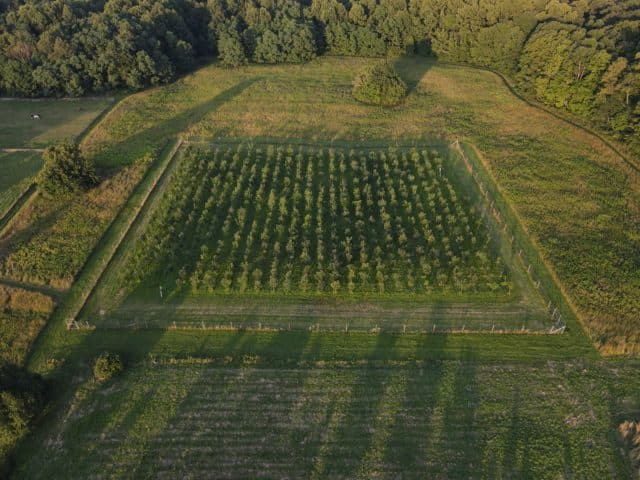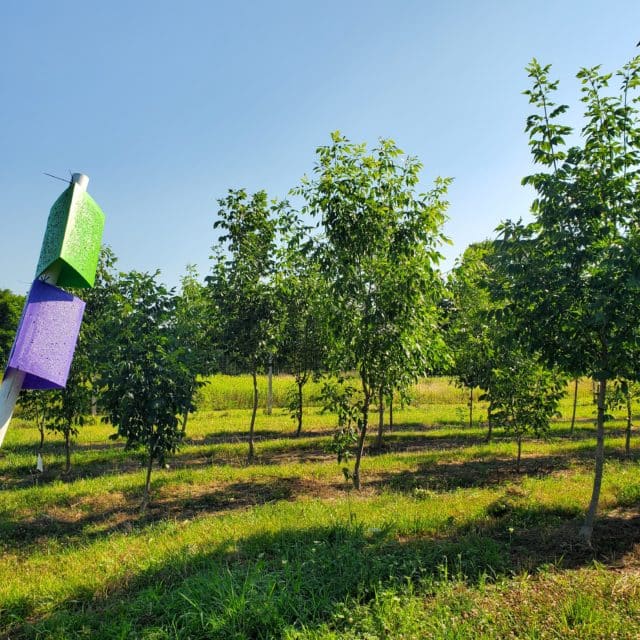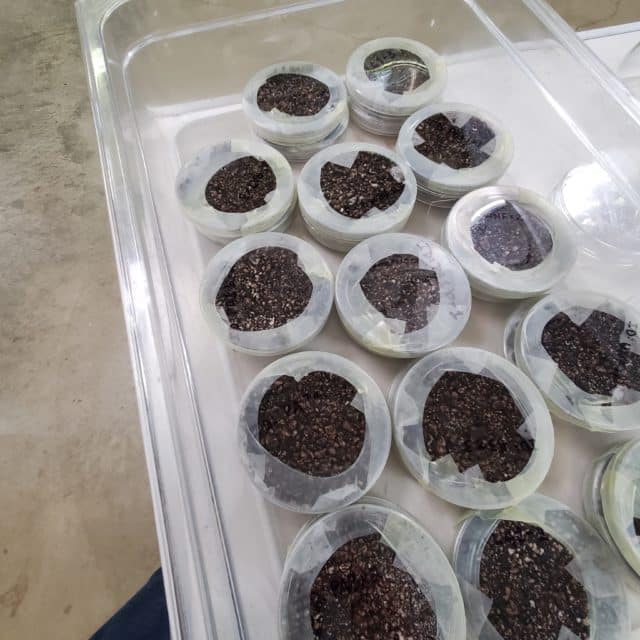Signs of Beech Leaf Disease found in one of Holden’s Most Popular Trees
April 25, 2023

Beech trees are known for their smooth gray bark and the deep shade they provide. The American Beech is an important part of our local native beech/maple forest, which is well represented in Holden’s natural areas. Beech trees are shallow-rooted, intolerant of site changes, and sensitive to soil compaction. These traits make them great for undisturbed sites, but not in lawns, high traffic areas, or as street trees.
The European beech is a popular alternative for planting in lawns. The beautiful foliage is thick and lush providing dense shade, and some varieties have a purplish leaf or are variegated.
The Fagus sylvatica ‘Pendula’ (European weeping beech) is a critical specimen in the Holden Forests and Gardens collection. This much-loved tree was planted in 1983 in the Main Display Garden and has long been a place for children to hide underneath the pendulous branches. This popular European weeping beech appears to be negatively impacted by root compaction from the many visitors who venture beneath the canopy. When a tree is stressed, it is more susceptible to insect and fungal diseases including Beech leaf disease (BLD).

What Holden Forests & Gardens has observed
In July 2022, we observed a decline in vigor including:
- yellowing leaves
- a thinner canopy on part of the tree
- severe soil compaction
- bacterial leaf scorch resulting from stress
- leaf browning and defoliation caused by woolly beech adelgid insect

- weakened branches infected by the fungus, Neonectria
- tar like spots on foliage caused by Anthracnose fungus
- darkened areas between veins that make individual leaves appear striped indicating Beech leaf disease (BLD)
What is Beech Leaf Disease (BLD)?
BLD threatens our native stands of American beech tree, as well as other beech species. It is a fungal disease spread by nematodes, which are microscopic worms. The nematode that causes BLD is a non-native invasive Litylenchus crenatae subsp. mccannii.
The L. crenatae are spread from leaf to leaf via water droplets. This type of spread is what is thought to create the typical BLD darkened banding or stripes between the veins of leaves. The banding may be followed by early leaf drop in summer, and then branch die back. Some of the branches on the west side of the tree are showing this pattern.

This European weeping beech is separated from our natural areas and does not have other beeches in proximity. The long distance and haphazard appearance of the nematodes suggests that a vector may move the nematodes across a greater distance than a nematode can travel themselves. Holden scientists have sampled various birds by capturing them briefly in nets to look for L. crenatae DNA in fecal samples. Many fecal samples have tested positive for L. crenatae, so it is possible that birds are helping to spread BLD.
BLD can cause defoliation and decline, and the eventual death of the tree.
What Holden Forests & Gardens is doing
We are asking visitors to refrain from entering under the tree canopy for a season or two, while we determine the proper course of action to best care for the tree.
In August 2022, we consulted with Bartlett Tree Experts.
In September 2022, we hired Bartlett to:
- decrease soil compaction by using an air spade to loosen and remove a layer of compacted soil in the drip line of the tree.


- Bartlett added biochar, compost, and freshly chipped coarse woodchips to correct nutrient deficiencies.


Horticulturist irrigated under the canopy weekly during dry conditions.
Going Forward
Horticulture and Collections staff will continue to monitor the tree.
If BLD symptoms remain, we will consider using additional treatment.
Holden Forests & Gardens scientists have been conducting many research projects focused on BLD in our natural areas. For more information about BLD and what you can do for your own beech trees, please visit Holden Forests & Gardens website Holden Forests & Gardens (holdenfg.org).
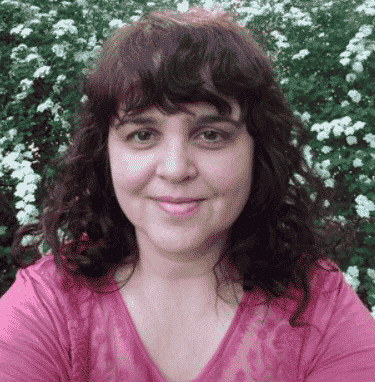
Sandi Cesarov
Horticulturist
Sandi Cesarov is a horticulturist at the Holden Arboretum campus. She earned a degree in Botany from Miami University. She is excited for spring.
